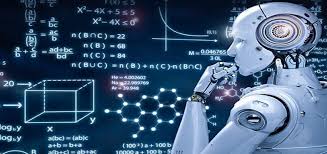Artificial intelligence (AI) has transformed the way technology interacts with the world. From voice assistants to self-driving cars, AI plays a crucial role in many aspects of modern life. However, not all AI systems function the same way. There are two major types of AI: narrow AI and general AI. Understanding the differences between them is essential for grasping the current state of AI and its potential future.
What is Narrow AI?
Narrow AI, also known as weak AI, is designed to perform specific tasks. It operates within a limited scope and does not possess human-like cognitive abilities. This type of AI excels at one particular function but cannot adapt beyond its programmed parameters.
Examples of Narrow AI
- Virtual Assistants: Siri, Alexa, and Google Assistant use narrow AI to recognize voice commands and perform predefined tasks.
- Recommendation Systems: Platforms like Netflix and Amazon suggest movies and products based on user preferences.
- Spam Filters: Email services use AI to identify and filter spam messages.
- Facial Recognition: Security systems rely on narrow AI to verify identities.
- Self-Driving Cars: These vehicles use AI for navigation, but they cannot perform tasks beyond driving-related functions.
Strengths of Narrow AI
- Efficiency: It can handle repetitive tasks faster than humans.
- Accuracy: AI models trained on large datasets provide precise results.
- Consistency: Unlike humans, narrow AI does not suffer from fatigue or emotions.
Limitations of Narrow AI
- Lack of Adaptability: It cannot perform tasks outside its training.
- No Consciousness: Narrow AI lacks self-awareness and decision-making beyond its programming.
- Dependence on Data: The performance of narrow AI relies heavily on the quality of its training data.
What is General AI?
General AI, also called strong AI or artificial general intelligence (AGI), is a theoretical form of AI that can understand, learn, and apply intelligence across various tasks, much like a human. Unlike narrow AI, general AI can adapt to new situations and solve problems without specific programming.
Characteristics of General AI
- Human-Like Learning: It can acquire knowledge from experience without requiring explicit instructions.
- Problem-Solving: General AI can handle a wide range of tasks rather than specializing in one.
- Self-Awareness: It can recognize its own thought processes and make independent decisions.
Theoretical Applications of General AI
- Medical Diagnosis: A general AI system could analyze symptoms, predict diseases, and suggest treatments.
- Autonomous Research: It could conduct scientific experiments and make discoveries without human intervention.
- Creative Fields: General AI might write books, compose music, or create art at the level of human experts.
Challenges in Developing General AI
- Computational Power: General AI requires immense processing capabilities beyond current technology.
- Understanding Human Cognition: Scientists must decode human intelligence before replicating it in machines.
- Ethical Concerns: The potential risks of AGI, such as loss of control or misuse, raise ethical questions.
Key Differences Between Narrow AI and General AI
| Feature | Narrow AI | General AI |
|---|---|---|
| Scope | Designed for specific tasks | Capable of multiple tasks |
| Adaptability | Limited to pre-programming | Learns and adapts independently |
| Intelligence | Task-specific intelligence | Human-like intelligence |
| Awareness | No self-awareness | Theoretically self-aware |
| Example | Chatbots, image recognition | Fully autonomous robots |
Current State of AI
At present, all AI systems in use are narrow AI. No true general AI exists yet. While machine learning and neural networks have advanced AI capabilities, they remain specialized within their domains. Tech giants like Google, OpenAI, and DeepMind continue to explore AGI, but its realization is still in the distant future.
Potential Impact of General AI
If general AI becomes a reality, it could revolutionize every aspect of life. From eliminating routine work to advancing scientific breakthroughs, AGI has the potential to reshape industries. However, it also presents challenges in job displacement, ethical concerns, and security risks. Experts suggest maintaining strict oversight and ethical guidelines to ensure the responsible development of AI.
Conclusion
The difference between narrow AI and general AI is fundamental to understanding AI’s present capabilities and future possibilities. Narrow AI dominates today’s technology landscape, powering applications from chatbots to medical imaging. In contrast, general AI remains a concept that could redefine intelligence and human-machine interactions. While the development of general AI continues, it is essential to balance innovation with ethical considerations. As AI progresses, society must remain prepared for both the opportunities and challenges that come with it. You can also read the blog how to make an ai operating system.
